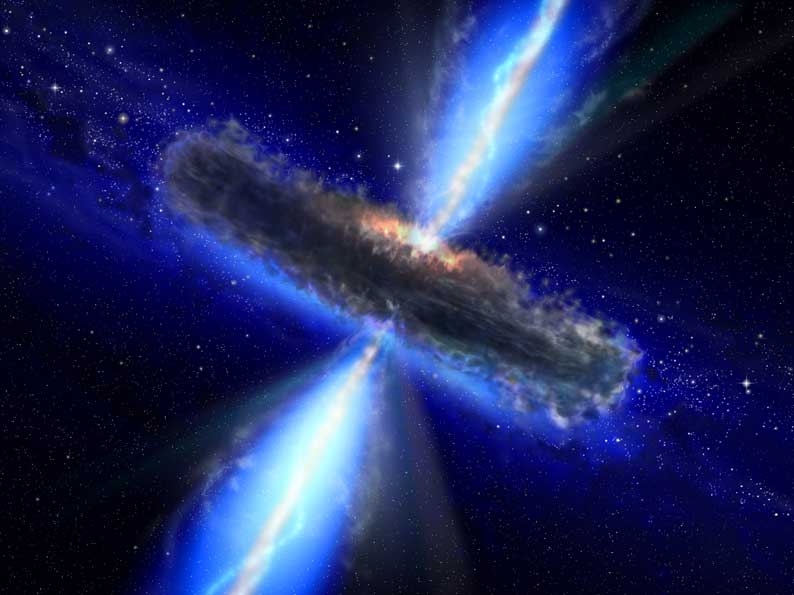Intro
Broadly speaking, the models for how ultra-high energy cosmic rays are created can be subdivided into two classes: the so-called top-down scenarios and the bottom-up scenarios. The unifying characteristic of the top-down scenarios is that UHECRs are simply created with their extremely high energy, often through the decay of exotic or relic matter. In bottom-up scenarios, UHECRs start as regular matter which is accelerated to ultra-high energies.
Top-down Scenarios
In top-down scenarios for the creation of UHECRs, cosmic rays essentially enter existence with the extremely high energies that are their defining characteristic. To achieve this, top-down models typically postulate that UHECRs are among the decay or annihilation products of extremely massive particles which we shall call X particles [1]. There are two broad subclasses of massive X particles that are generally considered as parent particles. The first subclass is comprised of massive particles trapped within topological defects left over from an early universe phase transition [2]. Examples of such topological defects include magnetic monopoles, cosmic strings, and domain walls [1]. The second subclass of X particles consists of extremely long-lived relic particles created in the early universe which occasionally decay or annihilate to produce UHECRs. The relic particle idea is interesting because such relics would also be dark matter candidates [1].
One of the unifying predictions of most top-down origin models is that a substantial fraction, as much as 50%, of the observed UHECR flux should be from photons [3]. When an X particle decays it will typically decay into quarks and leptons. The quarks will hadronize, producing several photons in the process. Some of the leptons will also decay, producing neutrinos. The end result will be a mixture of photons, light leptons, neutrinos, and some nucleons [4, 1]. If the top-down models for UHECR are true, we would expect to observe a significant number of photons in the cosmic ray flux at the highest energies.
Bottom-up Scenarios
In contrast with top-down scenarios for the origin of UHECRs, bottom-up scenarios are based on process that take prosaic matter and accelerate it to ultra-high energies. Most bottom-up models rely on some sort of matter flow (e.g. shocks) and magnetic fields to stochastically accelerate cosmic rays to ultra-high energies [1]. The stronger the magnetic fields, the more confined the matter is and the shorter the acceleration region needs to be. In contrast, large acceleration regions are needed for weaker magnetic fields. Potential examples of such cosmic accelerators include neutron stars, AGN, and galaxy clusters.
References
For further reading on the subject of the creation of ultra-high energy cosmic rays, please consider the following references:
- P. Bhattacharjee and G. Sigl, “Origin and propagation of extremely high-energy cosmic rays”, Phys.Rept. 327 (2000) 109–247
- P. Bhattacharjee, C. T. Hill, and D. N. Schramm, “Grand unified theories, topological defects and ultrahigh-energy cosmic rays”, Phys.Rev.Lett. 69 (1992) 567–570.
- Pierre Auger Collaboration, P. Abreu et al., “The Pierre Auger Observatory III: Other Astrophysical Observations”, (2011)
- G. Gelmini, O. E. Kalashev, and D. V. Semikoz, “GZK photons as ultra high energy cosmic rays”, J.Exp.Theor.Phys. 106 (2008) 1061–1082
